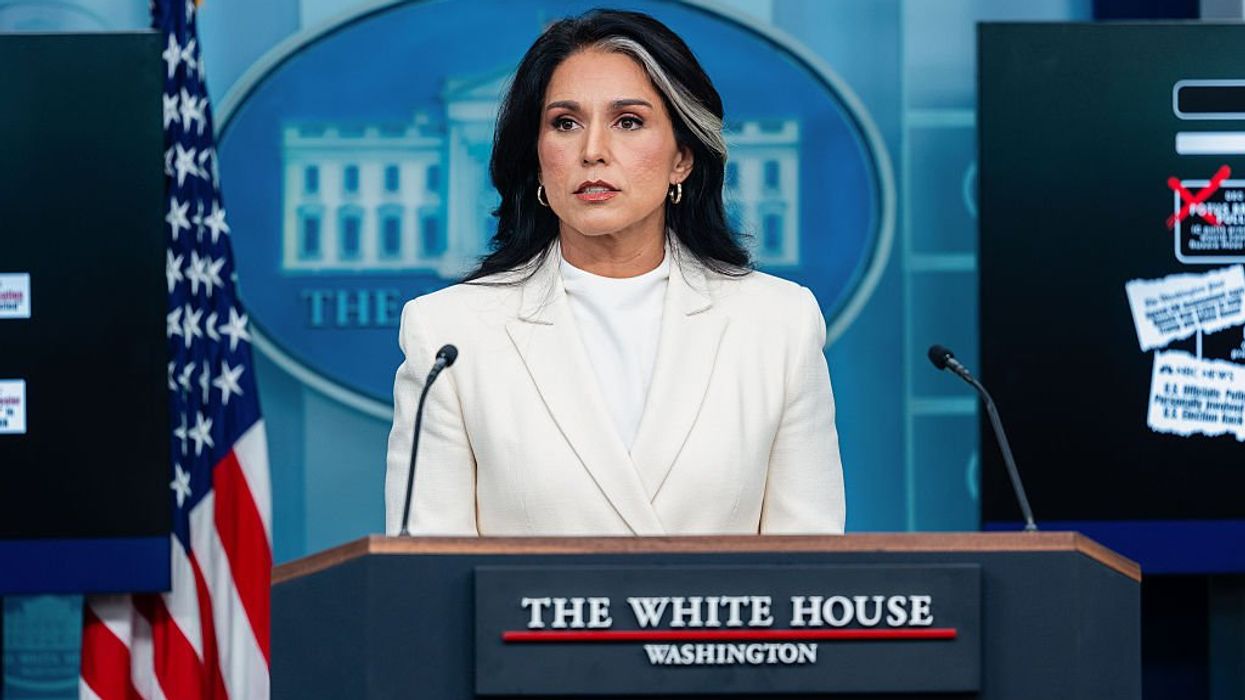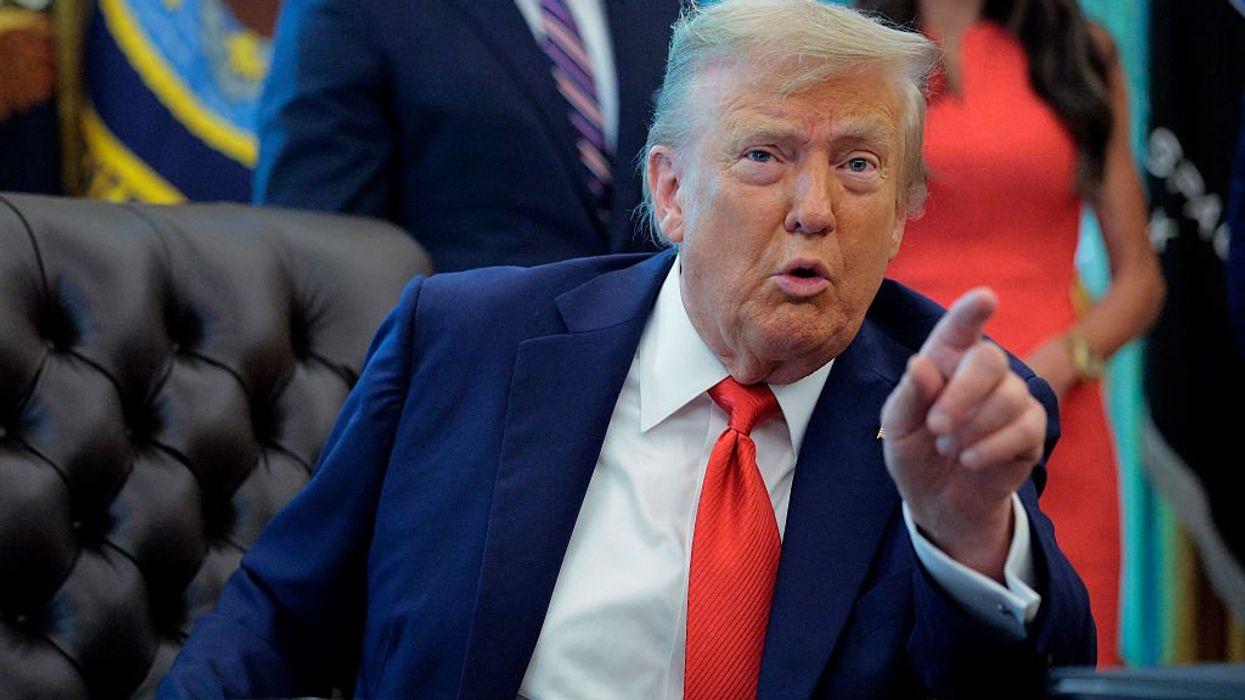The Durham annex and ODNI report documents expose a vast network of funders and fixers — from Soros’ Open Society Foundations to the Pentagon.
In a column earlier this month, I argued the deep state is no longer deniable, thanks to Director of National Intelligence Tulsi Gabbard. I outlined the structural design of the deep state as revealed by two recent declassifications: Gabbard’s ODNI report and the Durham annex released by Sen. Chuck Grassley (R-Iowa).
These documents expose a transnational apparatus of intelligence agencies, media platforms, think tanks, and NGOs operating as a parallel government.
The deep state is funded by elite donors, shielded by bureaucracies, and perpetuated by operatives who drift between public office and private influence without accountability.
But institutions are only part of the story. This web of influence is made possible by people — and by money. This follow-up to the first piece traces the key operatives and financial networks fueling the deep state’s most consequential manipulations, including the Trump-Russia collusion hoax.
Architects and operatives
At the top of the intelligence pyramid sits John Brennan, President Obama’s CIA director and one of the principal architects of the manipulated 2017 Intelligence Community Assessment. James Clapper, who served as director of national intelligence, signed off on that same ICA and later joined 50 other former officials in concluding the Hunter Biden laptop had “all the classic earmarks of a Russian information operation” ahead of the 2020 election. The timing, once again, served a political objective.
James Comey, then FBI director, presided over Crossfire Hurricane. According to the Durham annex, he also allowed the investigation into Hillary Clinton’s private email server to collapse after it became entangled with “sensitive intelligence” revealing her plan to tie President Donald Trump to Russia.
That plan, as documented in the annex, originated with Hillary Clinton herself and was personally pushed by President Obama. Her campaign, through law firm Perkins Coie, hired Fusion GPS, which commissioned the now-debunked Steele dossier — a document used to justify surveillance warrants on Trump associates.
Several individuals orbiting the Clinton operation have remained influential. Jake Sullivan, who served as President Biden’s national security adviser, was a foreign policy aide to Clinton during her 2016 campaign. He was named in 2021 as a figure involved in circulating the collusion narrative, and his presence in successive Democratic administrations suggests institutional continuity.
Andrew McCabe, then the FBI’s deputy director, approved the use of FISA warrants derived from unverified sources. His connection to the internal “insurance policy” discussion — described in a 2016 text by FBI official Peter Strzok to colleague Lisa Page — underscores the Bureau’s political posture during that election cycle.
The list of political enablers is long but revealing:
Sen. Adam Schiff (D-Calif.), who, as a former representative from California, chaired the House Intelligence Committee at the time and publicly promoted the collusion narrative while having access to intelligence that contradicted it.
Rep. Nancy Pelosi (D-Calif) and Sen. Chuck Schumer (D-N.Y.), both members of the “Gang of Eight” with oversight of intelligence operations, advanced the same narrative despite receiving classified briefings.
Sen. Mark Warner (D-Va.), ranking member of the Senate Intelligence Committee, exchanged encrypted text messages with a Russian lobbyist in efforts to speak with Christopher Steele.
These were not passive recipients of flawed intelligence. They were participants in its amplification.
The funding networks behind the machine
The deep state’s operations are not possible without financing — much of it indirect, routed through a nexus of private foundations, quasi-governmental entities, and federal agencies.
George Soros’ Open Society Foundations appear throughout the Durham annex. In one instance, Open Society Foundations documents were intercepted by foreign intelligence and used to track coordination between NGOs and the Clinton campaign’s anti-Trump strategy.
This system was not designed for transparency but for control.
Soros has also been a principal funder of the Center for American Progress Action Fund, which ran a project during the Trump administration called the Moscow Project, dedicated to promoting the Russia collusion narrative.
The Tides Foundation and Arabella Advisors both specialize in “dark money” donor-advised funds that obscure the source and destination of political funding. The Bill and Melinda Gates Foundation was the biggest donor to the Arabella Advisors by far, which routed $127 million through Arabella’s network in 2020 alone and nearly $500 million in total.
The MacArthur Foundation and Rockefeller Foundation also financed many of the think tanks named in the Durham annex, including the Council on Foreign Relations.
Federal funding pipelines
Parallel to the private networks are government-funded influence operations, often justified under the guise of “democracy promotion” or counter-disinformation initiatives.
USAID directed $270 million to Soros-affiliated organizations for overseas “democracy” programs, a significant portion of which has reverberated back into domestic influence campaigns.
The State Department funds the National Endowment for Democracy, a quasi-governmental organization with a $315 million annual budget and ties to narrative engineering projects.
The Department of Homeland Security underwrote entities involved in online censorship programs targeting American citizens.
 Bloomberg / Contributor | Getty Images
Bloomberg / Contributor | Getty Images
The Pentagon, from 2020 to 2024, awarded over $2.4 trillion to private contractors — many with domestic intelligence capabilities. It also directed $1.4 billion to select think tanks since 2019.
According to public records compiled by DataRepublican, these tax-funded flows often support the very actors shaping U.S. political discourse and global perception campaigns.
Not just domestic — but global
What these disclosures confirm is that the deep state is not a theory. It is a documented structure — funded by elite donors, shielded by bureaucracies, and perpetuated by operatives who drift between public office and private influence without accountability.
This system was not designed for transparency but for control. It launders narratives, neutralizes opposition, and overrides democratic will by leveraging the very institutions meant to protect it.
With the Durham annex and the ODNI report, we now see the network's architecture and its actors — names, agencies, funding trails — all laid bare. What remains is the task of dismantling it before its next iteration takes shape.

This article originally appeared on TheBlaze.com.

 Kean Collection / Staff | Getty Images
Kean Collection / Staff | Getty Images
 Bloomberg / Contributor | Getty Images
Bloomberg / Contributor | Getty Images Chip Somodevilla / Staff | Getty Images
Chip Somodevilla / Staff | Getty Images ROBYN BECK / Contributor | Getty Images
ROBYN BECK / Contributor | Getty Images